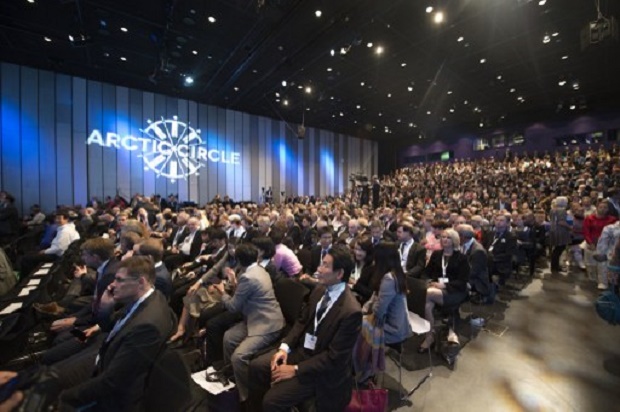Climate pact: The rocky road to Paris… and beyond

Participants attend the 2015 Arctic Circle Assembly in Reykjavik, on October 16, 2015. The conference draws attention to the damage caused by global warming ahead UN-led climate talks in Paris. AFP
Diplomats crafting a global pact to defuse climate change are under no illusion that the quest will end in Paris in December.
If anything, the latest haggle to prepare for the vaunted UN summit, now just weeks away, has strengthened awareness that reining in carbon emissions is a very long-term problem indeed.
The key, say negotiators, is to enshrine measures in the accord so that, for many years to come, nations will be obliged to do more.
In climate jargon, it’s called a ratcheting-up mechanism.
“This process is not going to finish in Paris,” Cuba’s negotiator Pedro Luis Pedroso told AFP at this week’s five-day parlay in Bonn ahead of the November 30-December 11 climate summit.
“Paris will just be an extremely important stopover because it will give a signal to the future.”
There is little doubt that the summit will come up with some sort of deal.
But will it be an empty shell?
Or will it provide an ambitious roadmap for achieving the UN goal of limiting warming to two degrees Celsius (3.6 degrees Fahrenheit) over pre-industrial levels?
The planet has already warmed by 0.8 C — leaving very little room for dawdling.
“What will really benefit the world’s vulnerable communities is a global agreement which includes a ratchet mechanism to increase ambition and ensure we don’t lock in a long period of inaction,” said climate analyst Mohamed Adow of Christian Aid — which pushes poor nation agendas.
“It is probably the most important issue to be included in the Paris deal. Without a ratchet mechanism, the Paris deal will be like building a beautiful car with no engine.”
Almost everyone agrees on the need to periodically review pledges and ramp them up until the 2 C goal comes into view.
But here’s where they differ: Should the first review be before 2020 or thereafter? Who will conduct these stock-takes? How often? And will nations be obliged to promise ever-higher targets?
Analysts say emissions-curbing pledges from more than 150 nations so far, set the stage for a 3 C warmer world of potentially dangerous storms, drought, sea-level rise and disease spread.
The pledges, called Intended Nationally Determined Contributions or INDCs, will be a cornerstone of the Paris pact, due to enter into force in 2020.
Some nations have set five-year targets for 2025, others look longer-term to 2030.
“The climate pledges made so far are insufficient and it is therefore essential to have a mechanism for ratcheting up those pledges every five years,” said Martin Kaiser of Greenpeace.
“They cannot be allowed to stand as they are for the next 10 to 15 years. That is a recipe for further destruction and human misery.”
Show us the money
Part of the problem is fear of failure — negotiators are keen to avoid a repeat of the 2009 UN climate conference in Copenhagen which didn’t even come close to sealing a global deal.
Instead of a top-down approach of apportioning emissions targets, it opened the way to a bottom-up approach: nations would set their own emissions-cutting targets and timelines.
The resulting effort is for now insufficient, but the window for improvement remains open — if only slightly.
The UN’s climate science panel says greenhouse gas emissions have to drop 40-70 percent between 2010 and 2050, and to zero by 2100.
But the same issues holding up progress in drafting the first truly global climate agreement also split nations on the review mechanism.
Developing nations want to make it conditional on rich countries providing hundreds of billions of dollars to help them switch from fossil fuels to renewable energy to power growing populations and economies.
“It will be very much dependent on how the international community devises means and ways to give those less advantaged the capability and the possibility to move forward without compromising on their development needs, without compromising on the need to eradicate poverty,” said Pedroso.
Many hope the battle lines will fade as new low-carbon technologies are developed, and costs come down.
“This is about a process,” UN climate chief Christiana Figueres said this week as negotiators bickered in Bonn.
“This is not about getting to the two degrees on the 12th of December, 2015.”
RELATED STORIES
Climate talks teeter as developing nations cry foul
Dalai Lama calls action on climate a ‘human responsibility’
Vulnerable nations launch ‘V20′ to fight climate change














